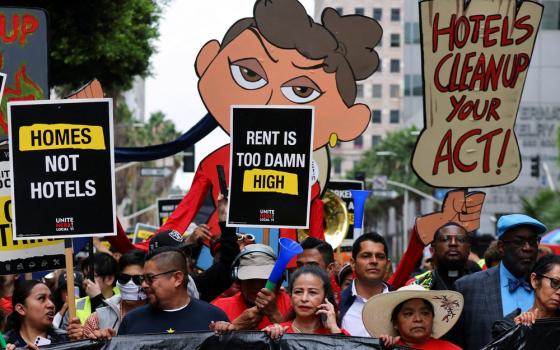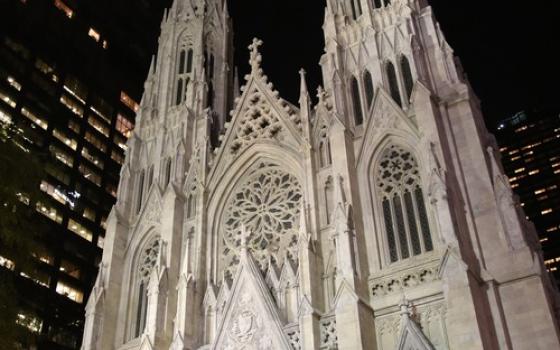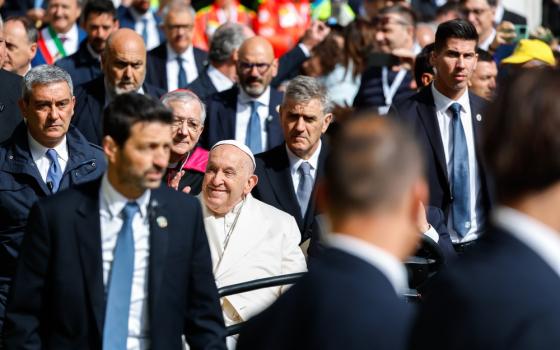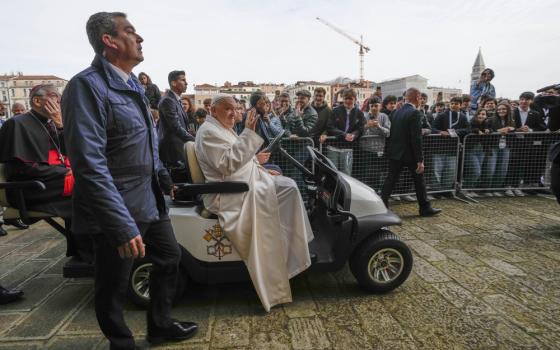It isn't very often that a city as jaded as Washington gets taken by storm. But, religion pollster Robert P. Jones, who founded the Public Religion Research Institute in 2009, recognized that pollsters and many social scientists generally were fascinated by issues of gender and race and class but not religion, despite the fact that America's religiosity was one of its most distinguishing characteristics. He moved to fill that void and is now one of the most cited and consulted voices in the city.
With his new book, The End of White Christian America, Jones establishes himself in the top ranks of public intellectuals on the American left. He moves beyond the numbers his surveys yield to an explanation of those numbers, and much else about our culture as he cataloges the decline of the cultural hegemony once exercised by white Anglo-Saxon Protestants. If, as he says, 100 years ago, you were a leader in industry or government, chances are you were a white Protestant male; today no such assumptions can be drawn. For good or ill, and there are plenty of people drawing either conclusion; the cultural norms and tendons once provided by white Christian America (WCA, as he terms it) are no more.
Jones does not start with his polling numbers but with an account of three buildings that serve as icons for the cultural tides he is cataloging. The United Methodist Building, directly across the street from the U.S. Capitol, was completed in 1923 and represented "the high-water mark of the first wave of white mainline Protestant denominational optimism in the roaring twenties." In 1958, President Dwight Eisenhower laid the cornerstone of the Interchurch Center on New York's Upper West Side, a building that represents to Jones "the second wave of white mainline Protestant ecumenism at mid-century." Finally, Jones looks at the Crystal Cathedral in Garden Grove, Calif., a fit representation of "the third wave of white evangelical Protestant resurgence in the 1980s."
The Methodist building now houses offices of the Islamic Society of North America, a lobbying office for Catholic Relief Services, and a satellite of the General Conference of Seventh Day Adventists. The Interchurch Center has lost many of its mainline tenants, not least the National Council of Churches itself, replaced by a mix of interfaith groups, Jewish organizations and secular non-profits. And the Crystal Cathedral, built by televangelist Robert Schuller, who was a kind of human bridge between Norman Vincent Peale's power of positive thinking and the still more crass prosperity gospel preachers of today, is being transformed in the seat of the Roman Catholic Diocese of Orange as Christ Cathedral.
Jones provides a good, concise summary history of the mainline and evangelical branches of the Protestant religion in the 20th century and their affiliated institutions. "In its heyday, a set of linked institutions reinforced White Christian America's worldview across generations: The Young Men's Christian Association (YMCA), the Boy Scouts, the Masonic Lodge, and the local country club with limits or even outright bans on membership for Catholics, Jews, and ethnic minorities," he writes. He calls the 1950s the "golden age" of White Christian America, and that "June Cleaver was its mother, Andy Griffith was its sheriff, Norman Rockwell was its artist, and Billy Graham and Norman Vincent Peale were its ministers."
Chapter 2 gets into the numbers, and they are stunning. "This generational snapshot uncovers a striking finding: today, young adults (ages 18-29) are less than half as likely to be white Christians as seniors (age 65 and older)," Jones writes. "Nearly seven in ten (67 percent) American seniors are white Christians, compared to fewer than three in ten (29 percent) young adults." And he draws the conclusion that has stalked this political season all year: "Falling numbers and the marginalization of a once dominant racial and religious identity -- one that has been central not just to white Christians themselves but to the national mythos -- threatens white Christians' understanding of America itself." Here is a large part of the reason Trump rallies are so angry.
Critically, Jones shows that after decades of conservative, evangelical white Christian mocking the declining church attendance numbers of the Protestant mainline denominations, they have begun to take the hit too: According to a 2014 PRRI (Public Religion Research Institute) survey, while 27 percent of American seniors identified as white evangelicals, only 10 percent of young adults do. A graph shows that in the states of South Dakota, West Virginia, Kentucky, Tennessee, Alabama and Arkansas, white Christians continue to constitute a majority of citizens. These are the states in which Obama did worse, and Trump is doing better, than any other in the country save Oklahoma. Another 16 states have white Christian populations in the 40-50 percent range, including several swings states: Ohio, North Carolina, and Iowa.
Jones looks at the relationship of white Catholics to these trends and offers a brief account of how conservative evangelicals and Catholics overcame their denominational hostility to make common political cause in the 1980s onward. But, the demographic numbers for conservative white Catholics are going south or, better to say, Catholics from the South, namely Latin America, are fast becoming the majority of American Catholics and they are decidedly more liberal in their politics. The section on the mainstreaming of Mormonism via the candidacy of Mitt Romney is also well done.
The section on "The Politics of Nostalgia" will be familiar to NCR readers from my colleague Tom Roberts' report on an event at Brookings at which Jones released much of the data that goes into his analysis on this topic. Jones recalls a 2012 email from the Christian Coalition that shows a Norman Rockwell Thanksgiving dinner with accompanying text that warns about God's condemnation and calls for prayer "to protect us from those enemies, outside and within, who want to see America destroyed." If you think "those enemies" includes liberals, you would be right. He notes that the Rockwell picture is rendered in black and white, always an invitation to nostalgia.
Jones goes on to explain why the Romney's campaign thought they had won the race on election day in 2012. They had met or surpassed their goals in precinct after precinct. The problem? They thought the electorate in 2012 would look more white than it did, factoring in the midterm results too much and thinking 2008 was an aberration. It wasn't. This year's election will be a test of many things, but one of those things is whether Trump can motivate enough angry white Christians who do not typically vote to come to the polls this year.
I will conclude this review tomorrow, and briefly address how this book and Isenberg's White Trash, taken together, frame the election this year.
[Michael Sean Winters is NCR Washington columnist and a visiting fellow at Catholic University's Institute for Policy Research and Catholic Studies.]




